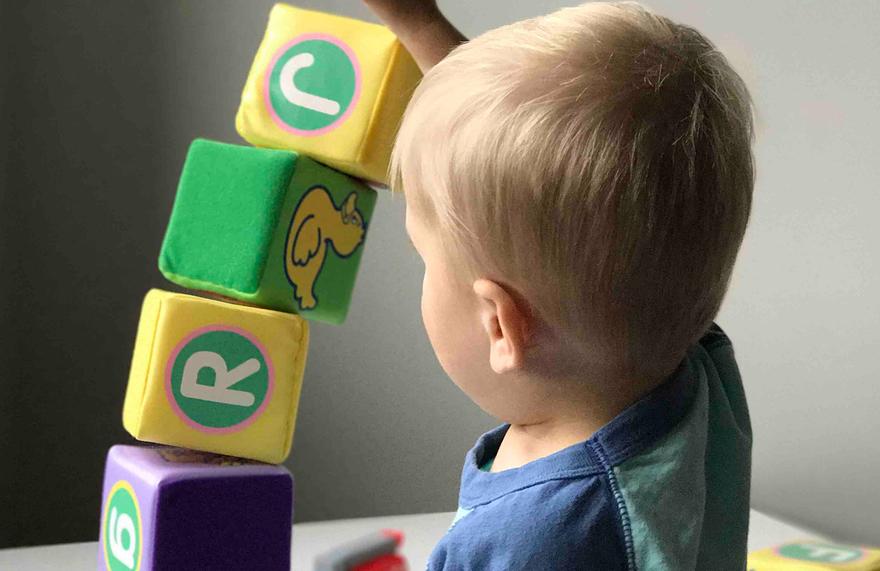How to drop from one nap to none.

I remember when my children were toddlers still so well. They were busy, curious, entertaining, pushy and exhausting! Any wonder I loved nap time! I’ve got a sneaking suspicion I wasn’t the only mum out there dreading the day my toddler would drop her day sleep!
How would I get anything done?
I loved that window in the middle of the day to eat my lunch in peace, catch up on things and go to the toilet by myself. It’s the simple things, right?
But the day inevitably came, the day nap was dropped and we began a new rhythm.
Today I want to share with you how to make this transition and drop from one nap to none.
Somewhere on the continuum from 2.5 - 3 years of age toddlers are generally ready to drop their nap. The precise time toddlers drop their nap varies greatly and depends on several factors such as their activity levels, temperament, developmental stage and their genetic predisposition.
Some toddlers drop it ‘early’ at closer to two years, and others definitely need a day nap well into three years of age. All of this is ‘normal’. But the average would be between 2.5 - 3 years. 
Signs that your toddler is ready to drop their nap:
- It becomes harder and harder to get them to bed. Your little bundle of energy is just not tired enough anymore to go to sleep around 12.30 - 1.00pm like they previously had been. You can see they are coping well with the day and you just know they are not tired enough to have a nap.
- The delayed onset of sleep in the evening. If your toddler is going to sleep later in the evening, and what was once a 7.00pm bedtime is now becoming more like 8.00pm, 8.30pm or 9.00pm, it a sure sign that they are having too much daytime sleep. Try trimming the nap significantly and see if that means you can get them into bed at the earlier bedtime again. If that doesn’t work you should cut the nap out altogether.
- They start waking up several times overnight (too much daytime sleep here is taking away from night time sleep).
- They consistently begin early morning waking (5.00 am, 5.30 am, 6.00 am). Once again too much day time sleep is now taking away from their ability to sleep through the night.
Let’s consider a common scenario. A toddler of nearly 3 years of age is having a two- hour nap still in the day and not going to bed until 9.00pm at night, falling asleep around 9.30pm. Some parents ask me would this daily routine be ok? I know on the surface it could look like a good routine, however there is an important element that is not being addressed in this scenario - the circadian rhythm.
As our toddlers grow, and their sleep structure is becoming more adult-like, circadian rhythm dictates that we should be having our sleep in the evening and at night. The first third of the night is when we generally experience our deepest, restorative sleep. As the night progresses toward morning our sleep cycles are often more in a lighter phase and REM (dreaming) sleep.
In the deep sleep stages we experience nourishing restorative sleep that fills and regulates our emotional tank, beds down memories and conducts cellular repair on every level. If your toddler, by having daytime sleep, is regularly missing out on sleep from 7.00 - 9.00 pm, then that is 14 hours across a week of deep sleep that they are not getting.
There is nothing like this golden evening sleep for toddlers, don’t let them miss out on it!
Tips on managing nap transition:
- If bedtime is creeping later and later first try cutting back the nap time significantly and see if that helps to keep the early bedtime. If trimming the naptime doesn’t work cut it out altogether.
- Be mindful of how late they sleep into the afternoon. Generally sleeping after 3.00 pm will make it really hard to get them to bed on time.Avoid late afternoon car trips on those non nap days. Even 15 minutes in the car can push out their bedtime to 9.00 pm!
- Dropping the nap is a transition. This transition can last from a couple of weeks to a couple of months. It isn’t as simple as cutting it out and they never have it again. Read your toddlers cues. Some days they may need a small nap and other days they won’t.
- It is very normal for your toddler as they get closer to three and over three that they may need a nap only every second or third day. A nap may still be needed on days where they are sick, teething, or at childcare.
Dropping the nap is a gradual process and you need to remain in tune with what your toddler needs from day-to-day. Keep in mind that it can be a tiring time, so on those non nap days get your toddler into bed super early so that they can get the deep, restorative sleep that they need to grow and thrive.
Is your child ready to drop their day nap? Let me know your scenario below and I’ll suggest ways you can make the transition as seamless as possible.
Categories
- Testimonials (76)
- Blog (26)
- Uncategorized (2)
- Daylight Savings (2)
- Food and Sleep (4)
- Naps (4)
- 4, 5, 6 Months (2)
- 7-12 Months (1)
- Newborn (4)
- Night Sleep (2)
- Sleep teaching (7)
- Teething (1)
- Toddler Sleep (2)
- Holidays and Travel (2)
- Testimonials_1 (12)
- Testimonials_2 (12)
- Testimonials_3 (12)
- Testimonials_4 (12)
- Testimonials_5 (12)
- Testimonials_6 (12)
- Testimonials_7 (4)


0 comments
Leave a comment
Please log in or register to post a comment